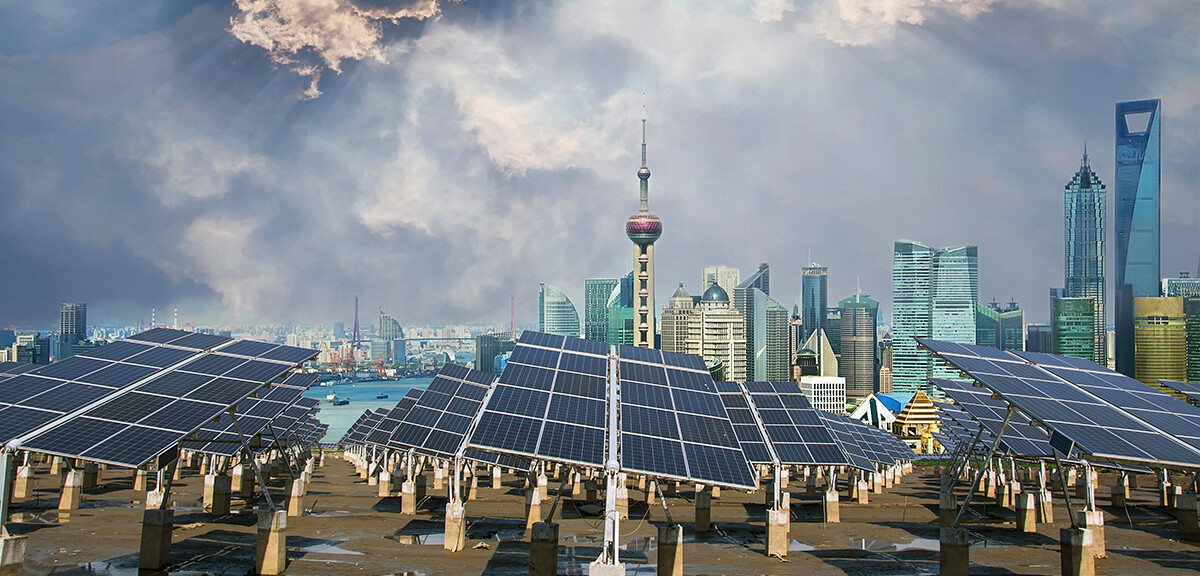For the past two decades, a clean energy revolution has been quietly taking place across the globe. More recently, a heated global race has begun with China at the head of the pack.
Judging from the emissions data, you wouldn’t think China is ahead. China’s carbon emissions have yet to peak, while the United States and the European Union have drastically lowered their carbon emissions over the last decade. The UK is now at 44% below its 1990 levels and plans to reduce annual carbon emissions to 70% below 1990 levels by 2045. Having peaked its carbon emissions in 2007, the United States has reduced its carbon emissions to 2% above its 1990 levels. China plans to peak its emissions by 2030. But recent investments in fossil fuel have cast doubt on that scenario.
At the same time, however, China has been making massive investments in energy transition. “China saw an economic opportunity in low-carbon industries,” according to Kelly Sims Gallagher, Director at the Tufts University Center for International Environment and Resource Policy, “and they formed industrial policy.” While Europe was an early mover in clean energy, China has harnessed its competitive advantage in policy consistency and lower-cost capital to lead the market in solar, wind, and EV technology exports. With the passage of the CHIPS, Infrastructure, and Inflation reduction bills in 2022, the United States has finally significantly accelerated clean energy investment. But is it too late for the Americans to catch up? At a recent Critical Issues Confronting China talk hosted by the Fairbank Center for Chinese Studies, Gallagher gave an update on the current state of the global race for Leadership in low-carbon tech and provided her outlook on the future of clean energy.
Five key takeaways:
China’s clean energy innovation was driven by economic opportunism
By 2009, China had made strong political commitments to renewable energy development and there was a noted government acceptance of climate science. But it was rather recognition of the immense economic potential in the green energy innovation that drove China past its tipping point. In 2009, China was already on track to pass the US as the world’s largest market for wind turbines and had begun pitting state owned power companies against each other to see which could build solar plants fastest. According to Gallagher, China initially made forays into clean energy technology as a means for export, but was able to adroitly set up a domestic market when conditions for outward investment and trade turned sour. Today, China is a veritable green power. It leads the world in renewable energy production figures and is the world’s largest producer of wind and solar energy, as well as the largest domestic and outbound investor in renewable energy.
A fear of China drove the U.S. to act on clean energy
Nothing exemplifies the return of Great Power politics more than the race for clean energy. Where decades of activism and warnings from scientists had failed to push significant policy change, fear of falling behind China has created a bipartisan effort to invest in clean energy transition. Together, the CHIPS and Science Act, Infrastructure Deal, and Inflation Reduction Act have brought close to half a trillion dollars in fiscal incentives and investments into the growth of clean energy and low-carbon technologies in the US. However, while the bills will boost research and development, they bring in limited regulation. Gallagher pointed out that according to the Department of Energy’s own estimates, the U.S. is “not competitive” in most clean energy sectors. It is still too early to tell if the massive influx of capital will be enough for the U.S. to win the clean energy race. “It’s a little daunting for the U.S.,” Gallagher said. Speaking of China’s dominance in the supply chains for low-carbon technologies, she added, “China is a planning economy, and that has really paid off.”
While China maintains an advantage in the race, the U.S. still has some areas where it might have a slight edge.
China seems to have an all-round lead on the U.S. in terms of trade balance, R&D investment, and patenting. On the investment front, China had surpassed the U.S. by the late 2000s and Europe by 2012 to be the world leader in low carbon technology investment, pumping in annually at least US$100 billion into innovation by 2014. As of 2018, Chinese investment in clean energy technology was almost double that of the U.S. (The scenario changes when accounting for nuclear investments by the U.S.) At the same time, China’s State-Owned Enterprises are still making massive investments in fossil fuels that entrench the high-carbon economy and signal a bumpy energy transition for China in the coming future. Still, China’s clean energy leadership is signaled not just by its robust investment, trade, and patent figures but rather the number of clean energy jobs. Arguing that a competitive economy is shown through job creation, Gallagher noted that China has created many jobs in the clean energy sector.
A case study in solar energy:
Nowhere is China’s leading position clearer than in the solar energy sector. China has an estimated 2.7 million people employed in the solar energy sector, making up more than half of the world’s 4.3 million solar jobs. How did China do it? Initially China’s solar industry began in the 1990s to supply Germany’s high demand. The Chinese government provided tax incentives and credits to lure in investors and scoured the globe for supplies of machinery and polysilicon. This vertically integrated supply chain in China created a mammoth solar manufacturing industry that produced more solar panels for less. When western countries imposed tariffs (charging dumping), the Chinese government was able to quickly develop a domestic market. In contrast, the U.S. outsourced its solar production to China. In 2014, the U.S. had a dozen factories producing Photovoltaic wafers and ingots. Today, none exist. According to Gallagher, the disassembling of clean energy infrastructure is making it difficult for the U.S. to claw its way back.
The outlook for the U.S. is grim
Gallagher concluded that U.S. competitiveness in low carbon technology had completely eroded and that Chinese dominance in the clean energy supply chain will not soon go away. China’s carefully operated state machinery, political commitment, and industrial backing will let it keep its advantage in the clean energy race for the years to come. Gallagher characterized China’s recent investments in fossil fuels as a response to a temporary response to global energy instability. But the direction and momentum of China’s industrial policy will continue China on the path of clean energy dominance. There is one bright spot of hope for the U.S. however: U.S. climate-related spending is due to take off in the next 5 years and will focus on the next step of the clean energy transition: electricity and energy systems integration.


